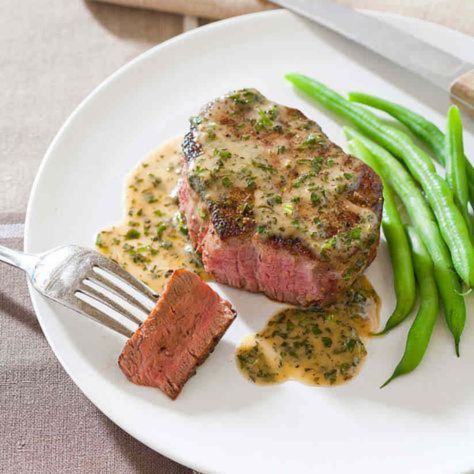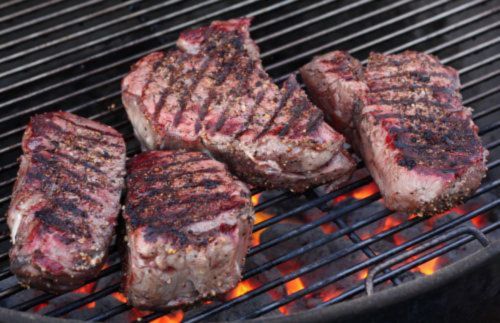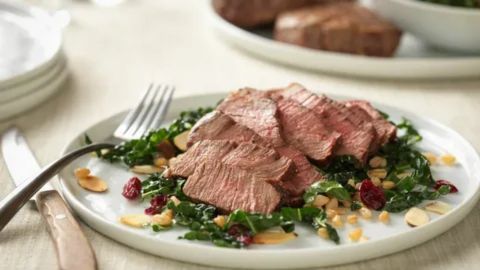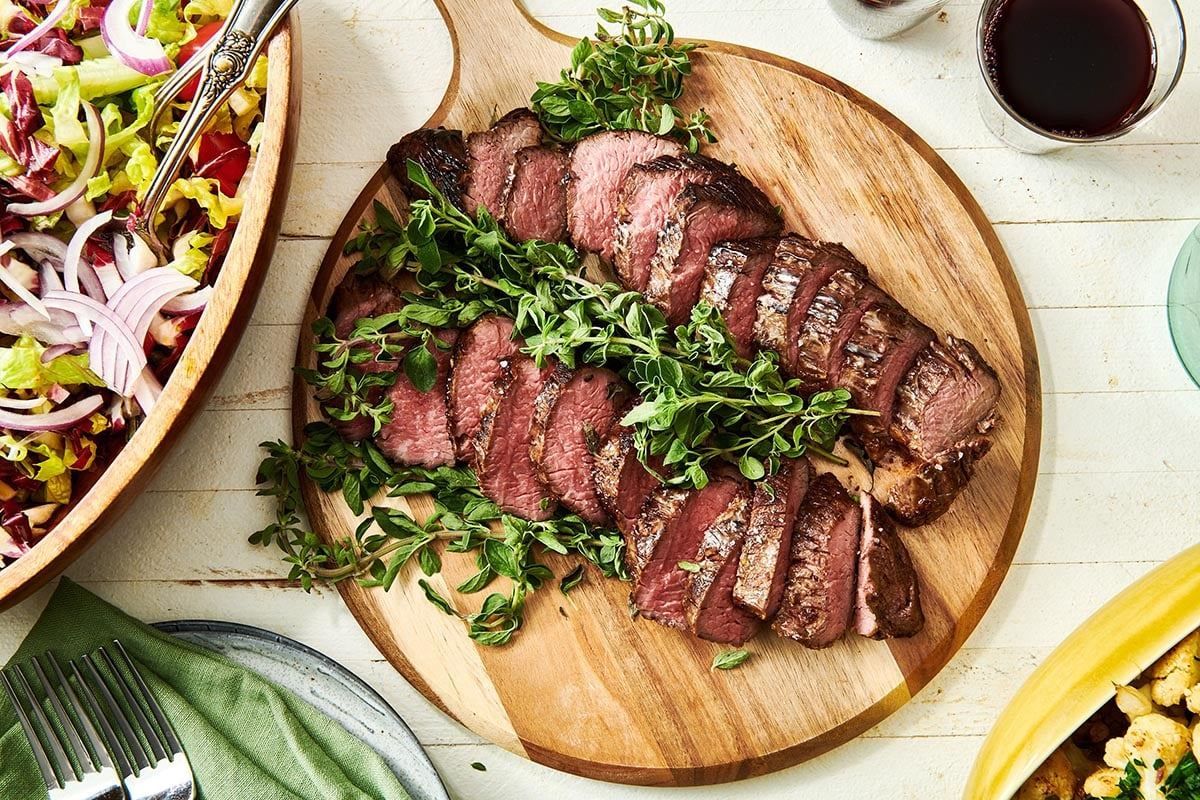Cook a juicy petite tender beef filet at home with our expert tips. Pan-sear, grill, or oven-roast for tender, flavorful result
Introduction
Cooking a petite tender beef filet can seem intimidating at first, especially if you’re accustomed to more common cuts like ribeye or tenderloin. Despite its modest size, the petite tender—or teres major steak—offers remarkable tenderness and rich, beefy flavor that rivals filet mignon at a more affordable price. Understanding how to cook petite tender beef filet properly ensures you preserve its natural juiciness while developing a beautifully seared exterior.

What Is a Petite Tender Beef Filet?
| Feature | Description |
|---|---|
| Name | Petite Tender Beef Filet (Teres Major Steak) |
| Origin | Beef shoulder (chuck/primal section) |
| Size & Shape | Small, compact, uniform cut |
| Texture | Lean, fine-grained, very tender |
| Flavor | Mild, beefy, versatile for sauces |
| Comparison | Comparable in tenderness and flavor to filet mignon, but more affordable |
| Cooking Methods | Pan-searing, grilling, oven roasting |
| Best Use | Steaks, sliced for stir-fry, or in sauces |
| Advantages | Tender, flavorful, budget-friendly, easy to cook evenly |
Preparing Your Petite Tender for Cooking
Before cooking, bring the petite tender beef filet to room temperature for even searing. Lightly season with salt and pepper or use a simple marinade to enhance steak flavor. If using frozen meat, thaw safely in the refrigerator overnight.
Pat the steak dry to ensure a proper crust when pan-searing or grilling. Proper preparation maximizes tenderness and allows the natural juices of this teres major steak to shine, setting the stage for a perfectly cooked, flavorful steak every time.
Cooking Methods for Petite Tender Beef Filet
There are several ways to cook a petite tender beef filet to perfection. Pan-searing followed by oven finishing locks in juices and creates a golden crust. Grilling over high heat adds smoky flavor while keeping the steak tender. For added richness, try pan-searing with a mustard or herb sauce. Regardless of method, monitor internal temperature carefully and let the steak rest before slicing to preserve its juiciness and texture.

Pan-Searing and Oven Finishing
To pan-sear a petite tender beef filet, heat a skillet over medium-high heat with a small amount of oil. Sear the steak for 2–3 minutes per side until a golden crust forms. Transfer to a preheated oven at 400°F (200°C) for 5–7 minutes to reach medium-rare.
Use a meat thermometer for accuracy. Allow the steak to rest for 5 minutes after cooking to let the internal juices redistribute, ensuring each slice remains moist and flavorful.. This method enhances flavor while keeping the teres major steak tender and juicy.
Grilling Petite Tender Beef Filet
Preheat the grill to high heat before placing the petite tender beef filet directly on the grates. Sear each side for 4–5 minutes to achieve a caramelized exterior while maintaining a juicy interior. Monitor the internal temperature with a meat thermometer to reach desired doneness.
For added flavor, brush with a light marinade or herb-infused oil during grilling. Rest the steak briefly after cooking to keep it juicy and tender. Grilling enhances the natural beef flavor of this tender, affordable cut.

Pan-Searing with Mustard or Herb Sauce
After searing a petite tender beef filet in a hot skillet, prepare a quick mustard or herb sauce in the same pan. Combine Dijon mustard, fresh herbs, and a splash of broth or cream to create a flavorful sauce that complements the steak’s natural juices. Pour over the rested steak before serving.
This technique enhances steak flavor and adds moisture, making the teres major steak tender and savory. It’s an easy way to elevate home-cooked petite tender steak to restaurant-quality results.
Resting and Slicing the Steak
After cooking, let the petite tender beef filet rest for 5–10 minutes. Resting allows the juices to redistribute, ensuring a tender, juicy bite. Always slice against the grain to maintain tenderness and avoid a chewy texture. Use a sharp knife for clean cuts.
Proper slicing enhances both presentation and eating experience, whether serving pan-seared, grilled, or oven-finished teres major steak. This simple step ensures every portion is flavorful, moist, and perfectly cooked.
Serving Suggestions and Pairings
Serve your petite tender beef filet with complementary sides like roasted vegetables, mashed potatoes, or a fresh salad. Enhance flavor with sauces such as garlic aioli, red wine reduction, or a simple mustard glaze. Pair with a bold red wine, such as Cabernet Sauvignon, or a light, refreshing cocktail to balance the steak’s richness.
Whether enjoying a pan-seared, grilled, or oven-roasted teres major steak, thoughtful pairings elevate the meal and highlight the tender, juicy texture of this flavorful cut.

Frequently Asked Questions (FAQ)
Q1: How long to cook petite tender beef filet?
Pan-sear 2–3 minutes per side, then 5–7 minutes in a 400°F oven.
Q2: Can I grill a frozen petite tender steak?
Thaw first for even cooking.
Q3: How to season it?
Salt, pepper, and optional herbs or mustard-based marinades.
Q4: Petite tender vs filet mignon?
Teres major is from the shoulder, tender and affordable.
Q5: How to store leftovers?
Refrigerate up to 3 days; reheat gently to maintain tenderness.

Eman is the creative force behind Learn to Cook, a culinary platform designed to make cooking simple, inspiring, and enjoyable for everyone. Her journey began more than a decade ago in her childhood kitchen, where she discovered how food could bring people together.
With a Diploma in Culinary Arts and 10+ years of hands-on experience, Eman has trained in five professional kitchens and experimented with 50+ unique recipes across diverse cuisines. Her expertise lies in blending traditional flavors with modern techniques—turning everyday ingredients into extraordinary dishes.
On Learn to Cook, she shares practical cooking tips, step-by-step guides, and tried-and-tested recipes that empower home cooks to build confidence in the kitchen. For Eman, cooking is not just about preparing meals—it’s about creating lasting memories, celebrating culture, and spreading joy through food.

